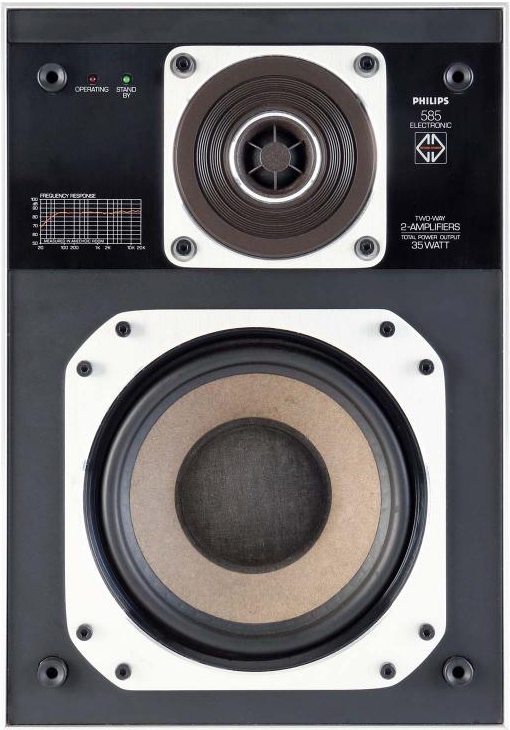Founded in 1926 by Guy R. Fountain in London as the Tulsemere Manufacturing Company, Tannoy—a portmanteau (footnote 1) of "tantalum" and "alloy," after a tantalum-lead alloy used in rectifiers—took on its current commercial identity in 1928. Through the war years and beyond, the company specialized in public-address (PA) systems. Indeed, today,...

Vintage Hi-Fi Blog
The Fisher 400 tube receiver may not be the easiest vintage amplifier to find, but it is well worth the effort to have it restored.
Philips AH585 loudspeaker
The Philips Motional Feedback (MFB) loudspeaker has been mentioned a number of times in these pages over recent years. The company achieved considerable success with both its first- and second-generation models, including the 22RH544, but in the UK at least, the third generation is less commonly encountered. The AH585 seen here is the smallest of...
As unusual as it is beautiful: The JBL Paragon came onto the market in 1957 and, although its appearance corresponded to the usual ideas of music furniture at the time, it was technically and, above all, in terms of efficiency and maximum sound pressure, galaxies above what else was standing around in the living room.
B&O Beomaster 2000
Bang & Olufsen's first move into the world of serious hi-fi came in 1967 with the introduction of the Beolab 5000 amplifier and Beomaster 5000 tuner. These defined the European state of the art at the time and were as successful as their high prices allowed. The company then distilled these two units into the Beomaster 3000, which offered similar...
The Fisher 400 tube receiver may not be the easiest vintage amplifier to find, but it is well worth the effort to have it restored.
Yamaha NS-1000M loudspeaker
There's no such thing as the perfect loudspeaker, nor is there ever likely to be one. Most manufacturers don't even try – theirs is a volume business where the trick is to produce a good-sounding product at an affordable price. There's nothing wrong with this, as perfection can often be the enemy of the good. Yet sometimes hi-fi companies do...
Luxman L-30 Amplifier
The L-30 was the cheapest amplifier in Luxman's 1976 range. Not that it looked anything like a budget model – rather, it had an almost intangible feel of quality and superior finish that in terms of showroom appeal put it above all but the very best offerings from the Japanese big names at the time.
Samuel Johnson Audio
Abrand new company, Samuel Johnson was founded by a group of enthusiasts, most of whom had met through their work with a Scottish-based manufacturer of control systems for industrial applications and who discovered further common ground in a consuming interest in hi-fi.
Sony TA 1120a (Vintage)
Slightly quirky in both sound and ergonomics, here is an amplifier for the serious collector










